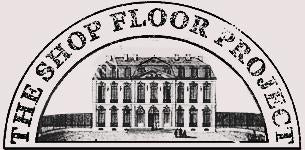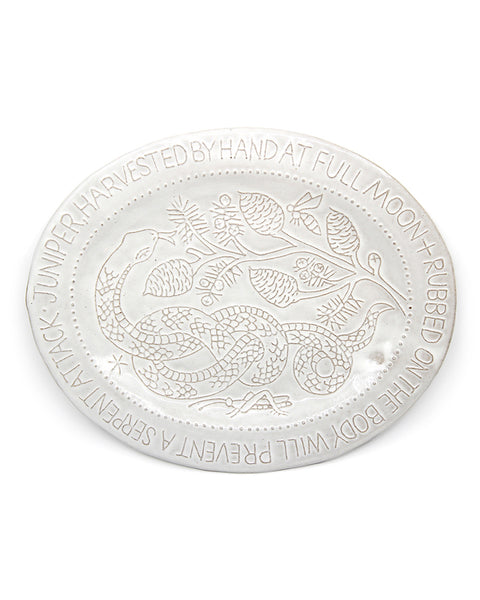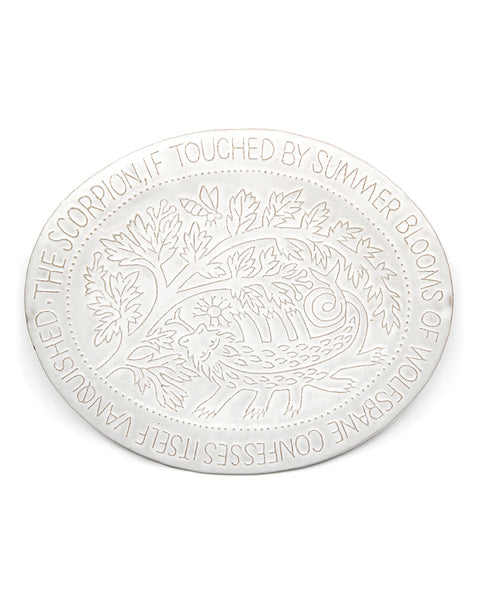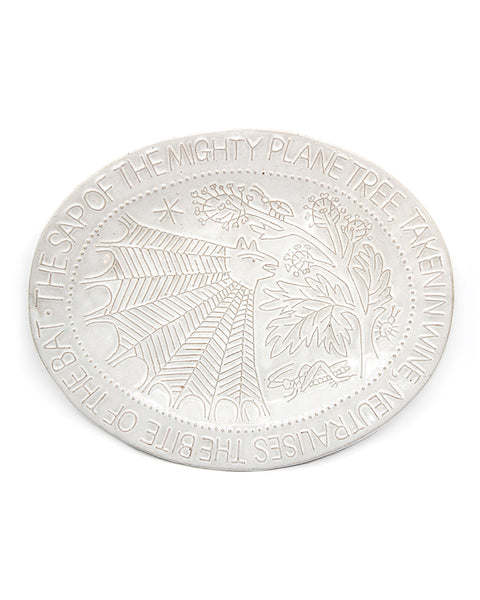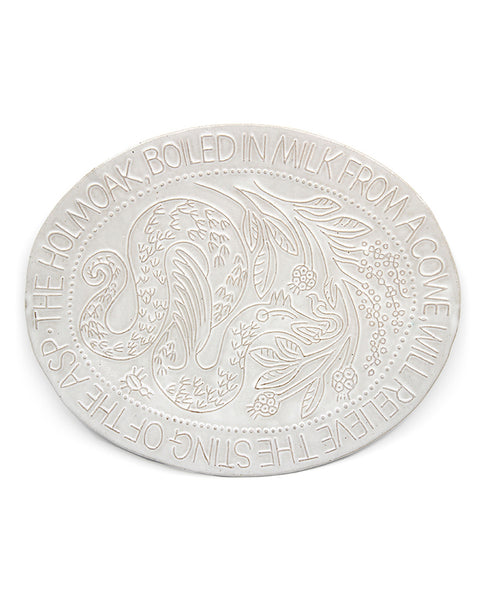A one-off hand made piece. Stoneware decorated with slip and white glaze. Signed on reverse.
Art pieces, for display purposes.
These plates feature plants and their uses taken from Pliny the Elder's "Naturalis Historia", which extensively documented plants, focusing on their medicinal properties and uses in Roman life:
The Dragon will take flight at the sight of a person rubbed in nettles and vinegar.
Nettles roughly bruised in vinegar and steeped in wine for three days and nights, then rubbed well all over the body will alarm the Dragon and cause it to take flight.

Perched on the cliffs above the picturesque Nidd Gorge, Fiona Biddington lives and works in the historic spa town of Knaresborough, which translates to ‘Fortress on the rock’. It is here, along the winding medieval streets and stone staircases, where Fiona’s 18th century stone cottage is located.
The town is shrouded in magic and mystery, a place famed for hermits, saints and sorcery, so it’s not surprising that her pottery tells of folklore, myth and magic, of wise women’s hedgerow remedies and country lore.
For this collection of plates Fiona has been influenced by Pliny the Elder (AD23), a Roman naturalist and author who wrote the first encyclopaedia, 'Naturalis Historia', a highly influential 37-volume book of natural history knowledge of the time.

From astronomy and botany to medicine and art, the book is an amazing insight into the culture and knowledge of Roman life. Pliny compiled the book from over 100 leading authors of the time and claims to have collated some 20,000 facts.

The chapters on Medicine and Magic were some of Fiona’s favourites, as much of her own work is about healing, of hedgerow remedies and the role of women healers in medieval life.
Pliny lists and explains the uses of over 900 medicines derived from plants, and although many of the claims now seem both fantastical and nonsensical, lots of that knowledge was the basis of modern research and discoveries.

“The book must have been a treasure trove, a bible of awe for those who could read it, and my current collection of plates for The Shop Floor Project tries to emulate the sense of wonder that people might have felt when delving into its pages for the first time.”

“The illuminated manuscripts of medieval bestiaries are another constant source of inspiration in my work. Compiled of drawings and descriptions of both real and imaginary animals, they read not as scientific fact but of mysticism, symbolism and allegory."

"Heavily illustrated to inform the illiterate general public, the images from bestiaries were painted onto church walls, woven into tapestries and carved into stone, as constant and heady reminders of how to live a devout and pious life. As most of the artists would have never seen the majority of these animals, the resulting illustrations are far from realistic. Leaning on earlier texts such as Pliny’s Natural History, medieval art and word of mouth, they speak of a wild and wondrous world of the divine, where creatures we recognise morph together to form new and spectacular hybrids, to inspire awe and veneration in all who saw them.”
